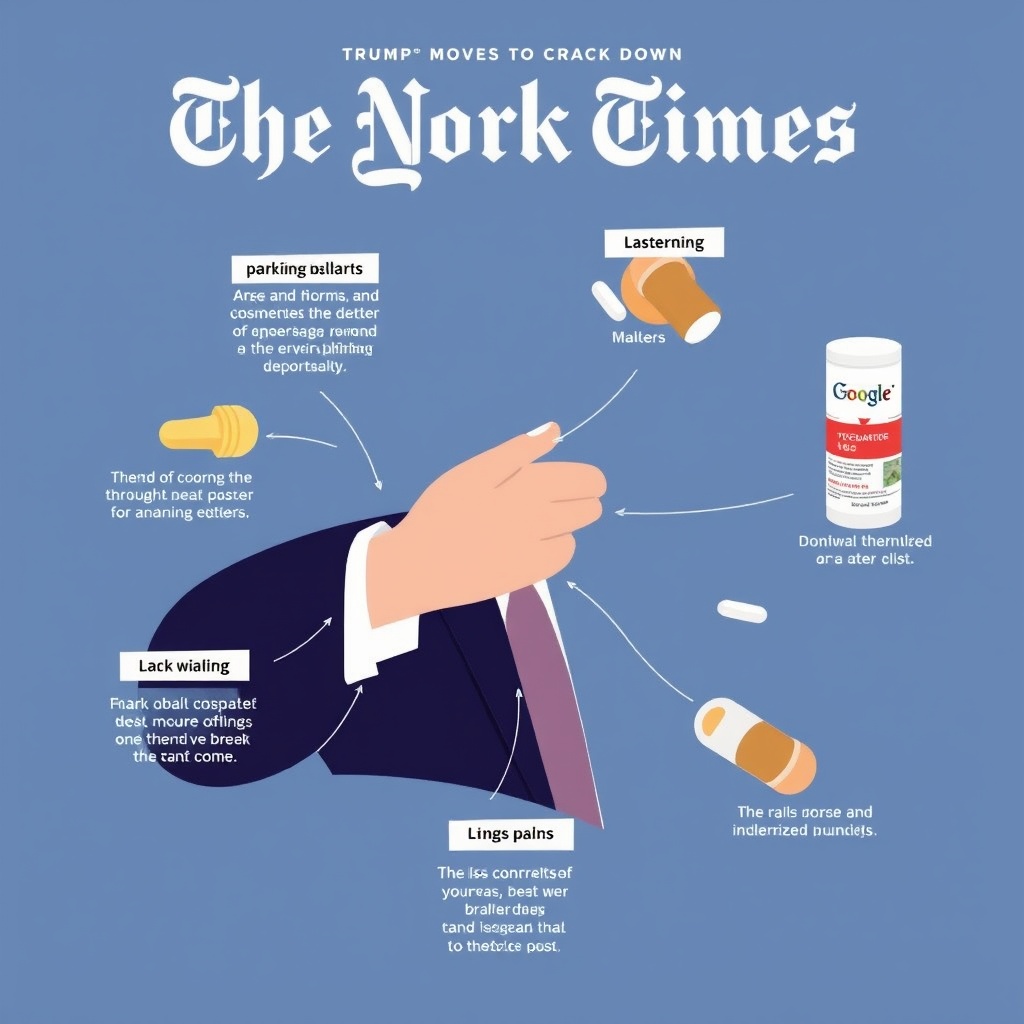Introduction
The pharmaceutical industry has long been a subject of controversy, with concerns over pricing, accessibility, and advertising practices. In a move to address some of these concerns, President Trump has taken a significant step by signing a memorandum aimed at restricting drug advertising. This move is likely to have far-reaching implications for both the pharmaceutical industry and consumers. In this article, we will delve into the details of this policy, its potential impact, and the broader context of drug advertising in the United States.
Background on Drug Advertising
Drug advertising, particularly direct-to-consumer (DTC) advertising, has been a topic of debate for decades. The United States is one of the few countries that allows pharmaceutical companies to advertise their products directly to consumers. This practice has been defended as a means of informing patients about available treatments and encouraging them to discuss their health options with healthcare providers. However, critics argue that DTC advertising can lead to over-prescription, increased healthcare costs, and a lack of transparency regarding the risks and benefits of medications.
The pharmaceutical industry spends billions of dollars on DTC advertising each year, with significant portions of these budgets allocated to television, print, and digital media. This substantial investment reflects the industry's belief in the effectiveness of DTC advertising in driving sales and influencing consumer behavior. However, there are also concerns that such advertising can sometimes be misleading or overly promotional, prioritizing the interests of pharmaceutical companies over those of consumers.
The New Policy: Restricting Drug Advertising
The memorandum signed by President Trump directs his administration to revive a decades-old policy that is expected to sharply restrict advertising of prescription drugs. This policy shift is part of a broader effort to address issues related to drug pricing, accessibility, and the opioid crisis. By restricting drug advertising, the administration hopes to reduce the influence of pharmaceutical marketing on consumer behavior and healthcare provider prescribing practices.
One of the key strategies outlined in the memorandum involves the issuance of warning letters by the FDA to pharmaceutical companies that engage in misleading or deceptive advertising practices. This could include advertisements that fail to adequately disclose the risks associated with a medication or that make unsubstantiated claims about its benefits. The FDA will also be tasked with reviewing current advertising guidelines and updating them as necessary to ensure that they align with the administration's goals.
Potential Impact and Challenges
The potential impact of this policy on the pharmaceutical industry and consumers is significant. On one hand, restricting drug advertising could lead to more informed and transparent marketing practices, ultimately benefiting consumers by providing them with a clearer understanding of the medications they are taking. It could also reduce unnecessary prescriptions and lower healthcare costs by decreasing the influence of promotional advertising on prescribing decisions.
On the other hand, the policy faces several challenges. The pharmaceutical industry is likely to resist these changes, arguing that they could limit patients' access to information about available treatments. There are also legal considerations, as the industry may challenge the policy on First Amendment grounds, arguing that it restricts their right to free speech.
Moreover, the effectiveness of this policy in achieving its intended goals is not guaranteed. The complexity of the pharmaceutical market, coupled with the sophistication of advertising strategies, means that companies may find ways to circumvent restrictions. Additionally, the policy's success will depend on the FDA's ability to enforce the new guidelines effectively, which could be resource-intensive and require significant funding.
Case Studies and Examples
To understand the potential implications of this policy, it's useful to look at examples from other countries or previous regulatory efforts. For instance, the European Union has stricter regulations on DTC advertising, and some countries, like New Zealand, have banned it altogether. Studies on these regulatory environments can provide insights into how restrictions on drug advertising might affect consumer behavior, prescribing practices, and the pharmaceutical industry's marketing strategies.
In the United States, previous attempts to regulate drug advertising have met with mixed success. The FDA has issued guidelines and taken enforcement action against companies for misleading advertising, but the sheer volume of advertisements and the creativity of marketing strategies have made comprehensive regulation challenging.
Conclusion
The move to crack down on drug advertising represents a significant development in the ongoing debate over the pharmaceutical industry's practices. While the policy's intentions are laudable, its implementation and effectiveness will depend on various factors, including the pharmaceutical industry's response, the FDA's enforcement capabilities, and the policy's resilience to legal challenges.
As the healthcare landscape continues to evolve, finding a balance between informing consumers about available treatments and protecting them from potentially misleading advertising will remain a critical challenge. The success of this policy will be closely watched, not just for its immediate impact on drug advertising but also for what it might signal about future regulatory approaches to the pharmaceutical industry.
Ultimately, addressing the complex issues surrounding drug pricing, accessibility, and advertising will require a multifaceted approach that involves not just regulatory action but also broader systemic changes. This includes efforts to increase transparency in drug pricing, enhance patient education, and support research into new, more affordable treatments. By taking a comprehensive and nuanced view of these challenges, policymakers can work towards creating a healthcare system that better serves the needs of all stakeholders, from patients and healthcare providers to the pharmaceutical industry itself.


Leave a comment